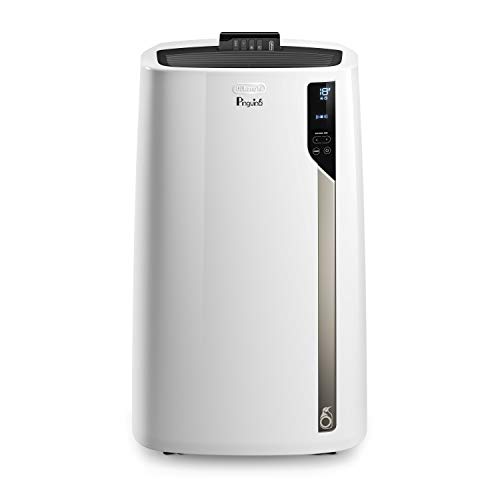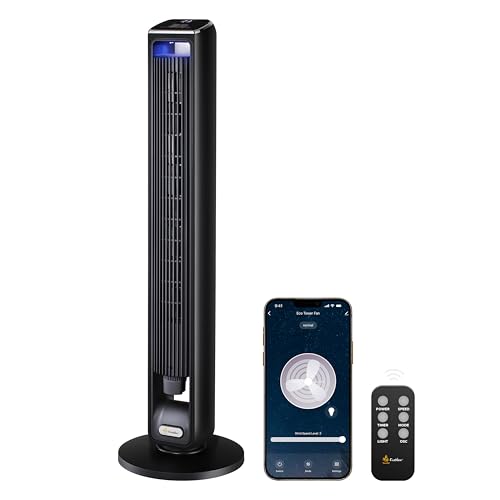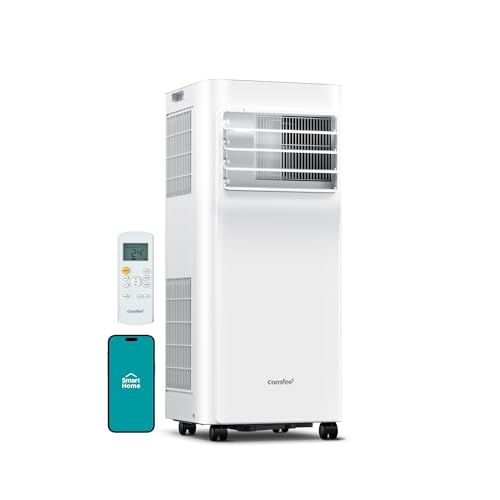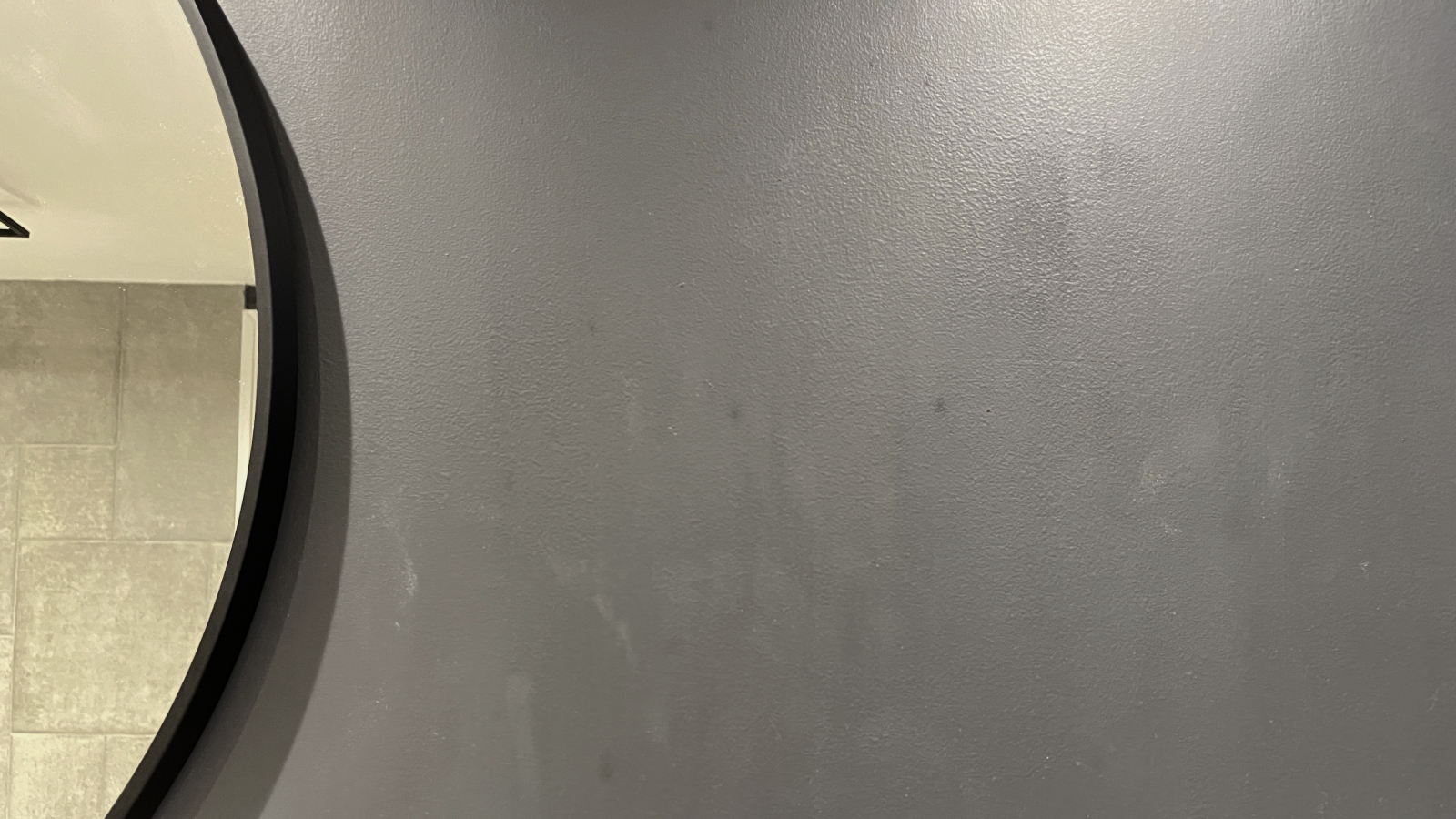Are air conditioning costs a worthwhile investment as we experience hotter weather in the UK?
Thinking of investing in a cooler home? We explore air conditioning costs from installation through to running costs, to help you plan your budget
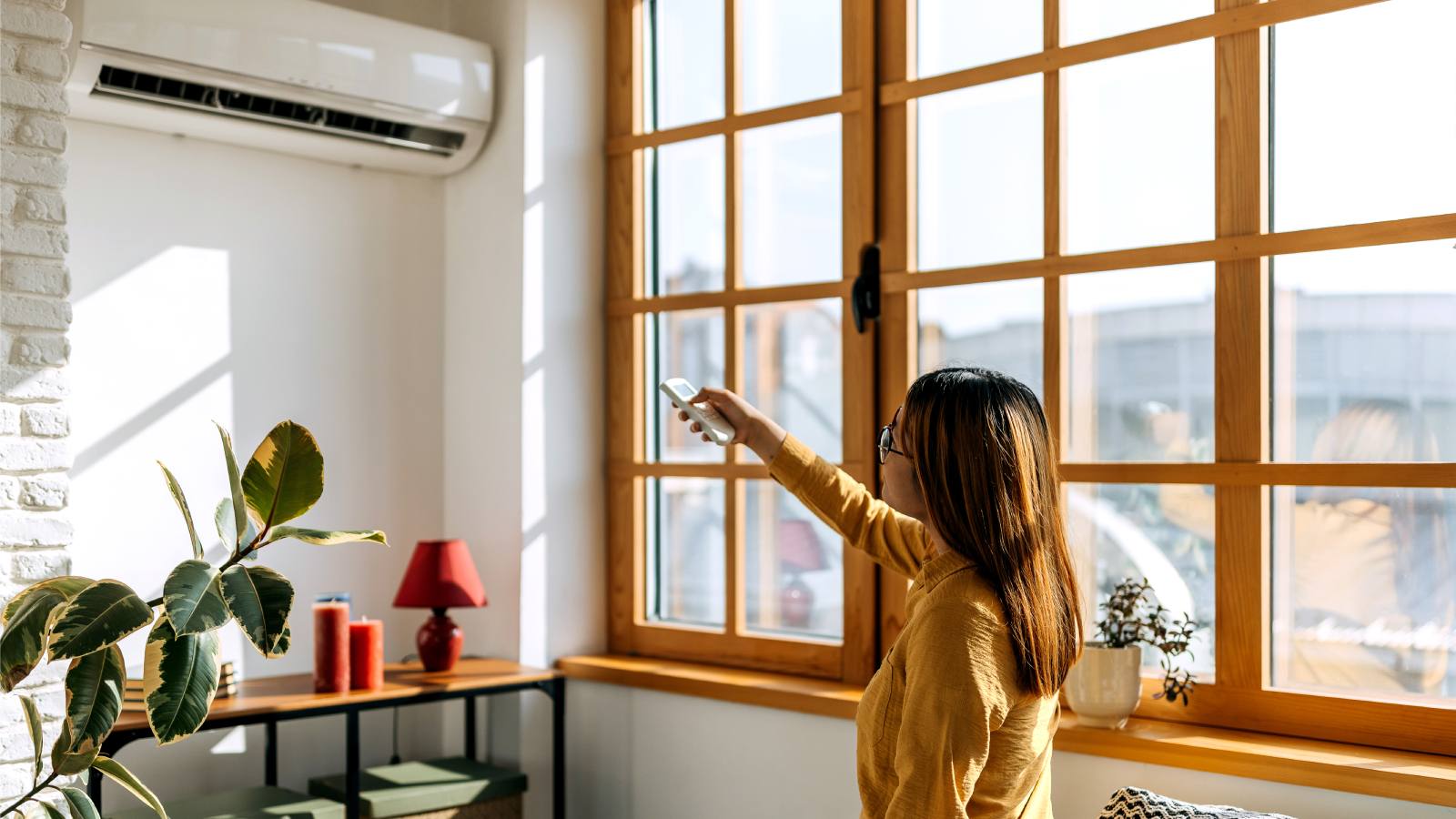
While talk of air conditioning costs in the summer is not unheard of, it's become a more popular topic in recent years with regular mini heatwaves. And, with many air con units also offering a dual heating function too, the expenditure might suddenly be seeming less extravagant.
But, with air conditioning still a relatively new concept in the UK, you could be unsure what to expect from air conditioning costs. From purchasing and installing air con, through to running and maintenance costs, is it a luxury purchase or one that could be within reach?
Energy expert, David Hilton, along with other air conditioning experts shoot the breeze on what to expect to pay for air conditioning costs.
Factors influencing cost
Understanding the factors influencing air conditioning costs, isn't just a case of assuming the bigger the size of air con you need, the higher the costs. There are a number of other points to take into consideration too.
"The cost of an air conditioning unit varies depending on the size, type and heating and cooling requirement of the property," explains Hamid Samili, residential product manager at Daikin UK.
"We suggest working with a qualified installer to discuss the best option for your budget. However, there are also many online tools available to calculate this, including our Daikin Calculator."
"You'll also need to take into account the location of the unit," adds Adam Knight, a lead engineer at BOXT. And perhaps change your mind set as well.
Bring your dream home to life with expert advice, how to guides and design inspiration. Sign up for our newsletter and get two free tickets to a Homebuilding & Renovating Show near you.
“Air conditioning is often seen as a luxury, but it’s becoming much more accessible, and for many people, it’s a smart long-term investment in comfort and wellbeing," he explains.
"With new research from BOXT revealing that over a quarter of Brits (28%) spend over £300 each summer on gimmicks battling the heat (neck fans, cooling wipes, misting sprays and slushie machines etc), all of which are just temporary cooling hacks, the maths suddenly becomes more about appreciating the long term investment value vs the quick fix that financially adds up over time," he says.


Hamid Salimi has a BSc and MSc in mechanical engineering and has worked with Daikin for over 13 years in various roles such as product applications, HVAC design and currently as a Product Manager leading a team of product specialists covering all aspects of residential heating and cooling systems.
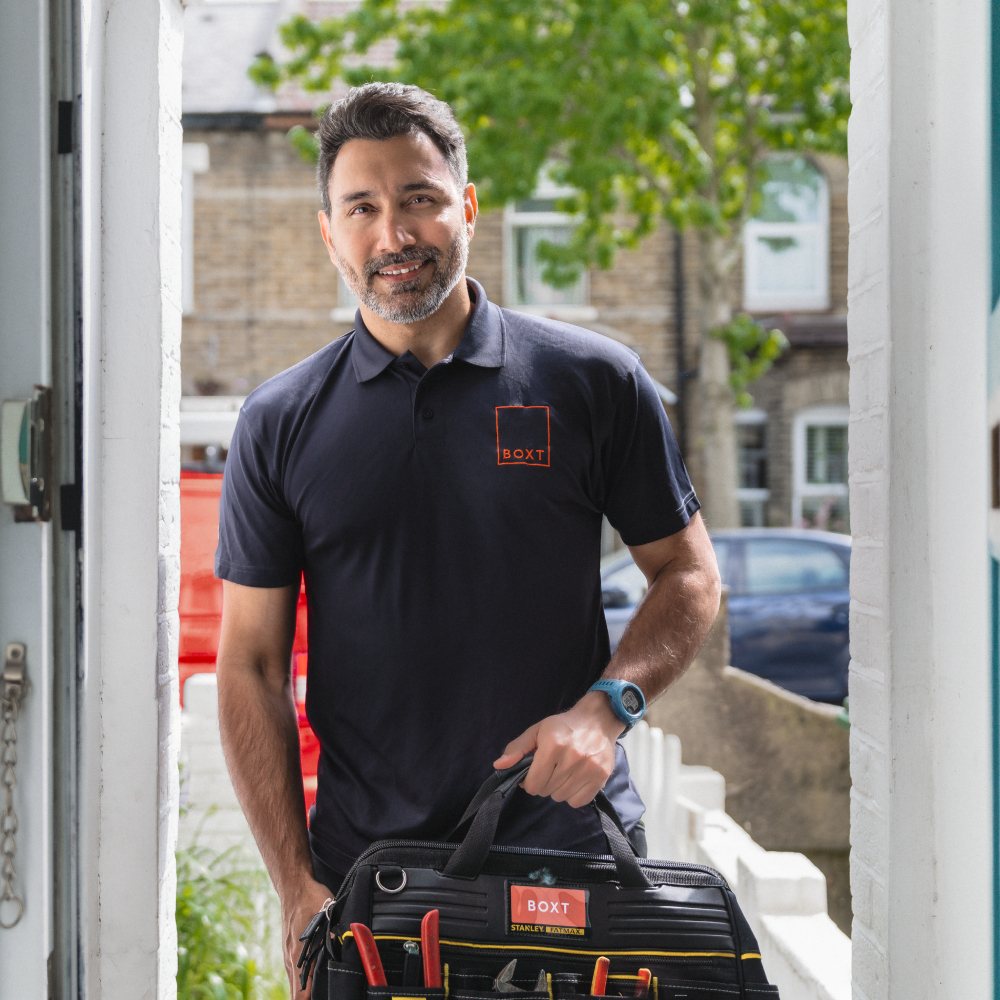
Adam Knight is a Lead Engineer at heating and cooling experts, BOXT. Adam brings over 17 years of industry experience, including 14 years at British Gas specialising in auditing, gas qualifications, and incident investigations, and now leads BOXT’s Tech Survey Team with specialist training in air conditioning and heat pump systems.
How much does air conditioning cost for one room?
Fully installed air conditioning systems have an outdoor fan unit that is connected to indoor fan unit via refrigerant pipes and they have a number of different configurations. The simplest fully installed air conditioning systems are known as room air conditioners (RAC) comprising of one outdoor fan unit and one indoor unit.
These systems are usually for single room use and your air conditioning cost for this will be based on materials and air con installation.
"At BOXT, the cost of installing a fitted unit in one room starts from £2,199, which includes professional installation," says Adam Knight. "For those who prefer to spread the cost, we offer flexible finance options starting at just £30.67 a month with no deposit. That’s the equivalent of a few iced drinks a month – but instead of a quick fix to cool down, you’re getting consistent, controllable comfort in your home, plus better air quality and improved sleep."
An advancement on the RAC unit is where there is one outdoor fan unit and two indoor units. Both indoor units serve a single room and they are both either on or off. You cannot usually operate the indoor units individually and they can only be in cooling or heating mode.
The exact specification of the indoor units will often differ between manufacturers and it is definitely worth getting a number of quotes for different brands.
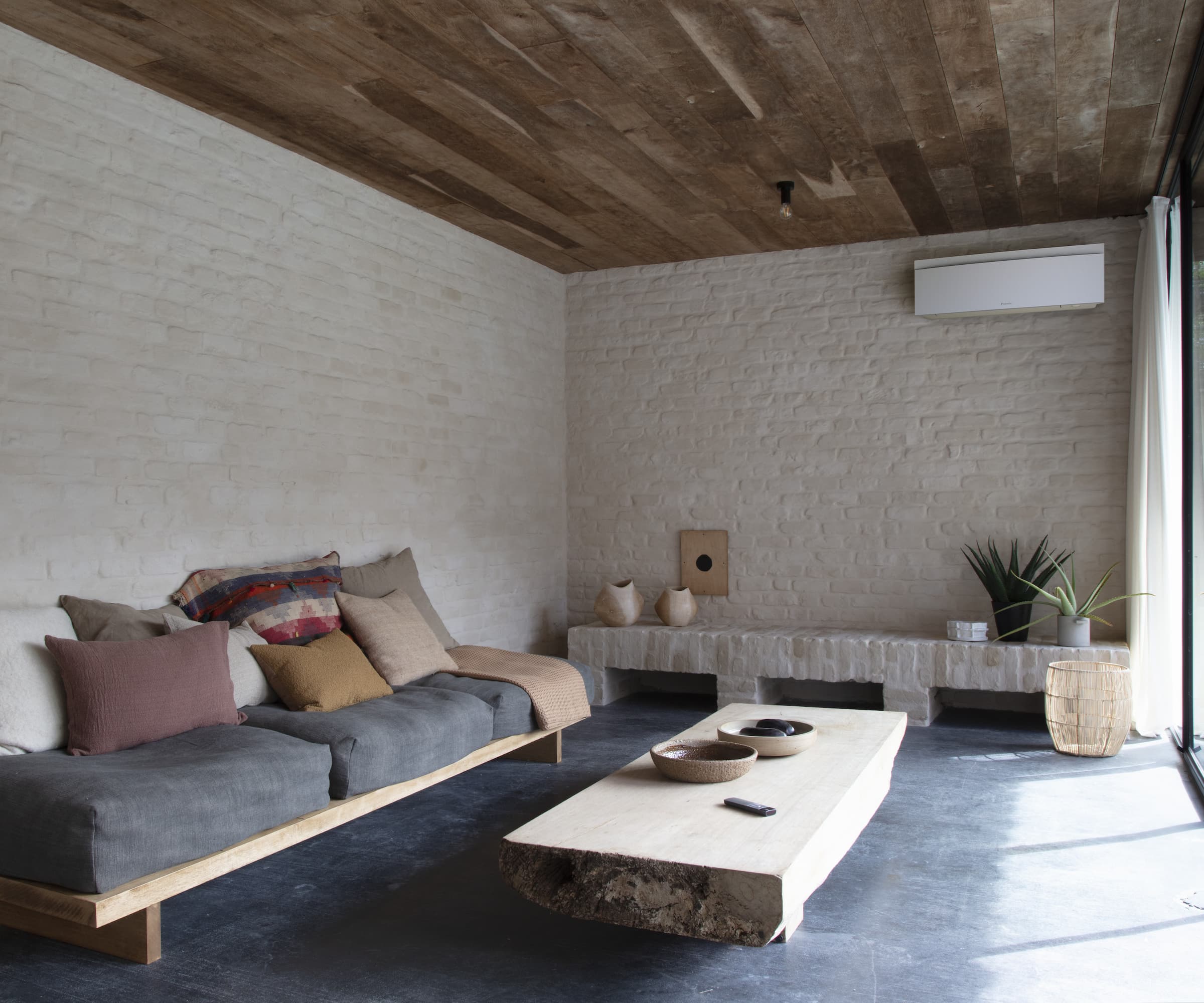
How much does whole-house air conditioning cost?
For those looking at how to keep a house cool, the next step up is the multi split air conditioner – these systems have one outdoor fan unit and can have up to around 10 indoor units depending on manufacturer.
The indoor units can be located in the same room or in separate rooms, can be operated individually or together in any number up to the full installed amount.
The costs of multi split systems vary according to which indoor units you have, and there are a number of different indoor units ranging from fan convectors that look a bit like a central heating radiator, wall-mounted bulk heads, to slim duct systems that can be boxed in and ducts installed to distribute the air.
These units are popular because the air conditioning noise is then further away from the point of delivery but there does need to be more design detail put in to define where the ducts go. This can all add cost.
The simplest installation will usually be the wall-mounted bulk head type of indoor unit.
"Our two-room packages start from £4,995 which includes a smart speaker for voice control," confirms Adam Knight, "The good news is, there are smart solutions that make it more efficient and economical. We install multi-split systems that use one outdoor unit to power multiple indoor units. Not only does this follow industry guidelines, but it helps reduce the visual clutter and space needed outside.
"It also gives you zoned control," he adds, "so you can cool or heat individual rooms as needed, which helps save on energy bills in the long run."
Air conditioning running costs
Air conditioning units use electricity so this does need to be taken into account when looking at your overall air conditioning costs. The air con unit uses a refrigerant cycle to deliver cooling and the waste heat is rejected to the outside. The process allows for around 300% efficiency, meaning that if you use 1kWh of electricity you will get an equivalent 3kW of cooling.
Taking the average air conditioning indoor unit at around 2kW means you will use around 600W of electricity. With average electricity costs currently at around 24.50p per kWh, expect the air conditioning to cost around 15.4p per hour per indoor unit.
Or, for a higher cooling efficiency unit of 6kWh, it'll be around 2kWh, costing 51.46p per hour per indoor unit.
“The cost of running an air conditioning system varies depending on factors like the size of your space, how often you use it, and your electricity tariff," agrees Adam Knight, "but it’s often less than people think. For example, a high-efficiency Bosch unit can cost as little as 27p - 30p per hour to run. That means if you use it overnight for eight hours in the summer, you’re looking at just over £2 a night for cool, clean air.
At Daikin, Hamid Salimi explains how, "the running cost of a multi-split unit for both heating and cooling a house with five habitable areas is around £900 a year.
"This cost is based on the system running for six hours per day, seven days a week," says Hamid. "If the running hours are reduced to 4 hours, in a well-insulated house, the running cost will drop to around £600 a year."

Air conditioning maintenance and service costs
A fully installed air conditioning system must be inspected regularly to assess its energy efficiency, so you'll also need to factor this air conditioning cost into your plans when considering introducing a system into to your home.
Again costs may vary depending on the supplier, so be sure to ask for this to be included when you get your initial range of costs.
"We would recommend an annual service of your air conditioning unit," says Hamid Salimi. "This involves a full system check, including cleaning all the filters, outdoor coil and looking for any issues in the pipework. A typical annual maintenance cost is £150 - £200, depending on the size, location and type of the unit."
"An annual service is usually required to keep the manufacturer warranty, and costs will vary depending on where you live and the size and location of the unit," adds Adam Knight. "However, a one-off service can cost roughly £70 - £120 per unit. Regular maintenance is key to ensure everything is running efficiently and helps catch any small issues before they become expensive problems.
"For example, it will tell you if a replacement filter is required," he says. "However, these are relatively cheap, and can come in at under £10."
Ways to save on your air conditioning costs
However, as with most heating or cooling systems in your home, there are ways you can help reduce costs, both in terms of creating a home where a smaller size unit may be sufficient, and your running costs can be reduced.
"First, make sure your home insulation is the best it can be," says Adam Knight. "If cool air is escaping through poorly sealed windows or doors, your system will have to work harder and use more energy.
"Second, regular maintenance is key," he warns. As well as the yearly check-up, you should also keep vents and filters clean, as clogged filters can reduce airflow and increase power usage, especially if you have pets.
"Another great tip is to pair your air conditioning with solar power," suggests Adam. "While most people think of AC as something that just cools a room, many don’t realise that modern systems can also provide efficient heating, making them a smart, year-round solution. When powered by solar pv, your AC becomes even more cost-effective, using clean, renewable energy to reduce running costs in both summer and winter.
"Finally, when using your AC, think carefully about what temperature your air con should be set at. Keep in mind that temperatures don’t need to be set as low as you might think. Between 21 and 23 degrees will usually suffice to create a comfortable room," advises Adam.

What is the cheapest type of air conditioning?
The lowest air conditioning cost you can expect to pay is for a portable model rather than a fixed system. These units, as the name suggests, are portable and can be moved from room to room as required. The best portable air conditioners start at around £250 and have no installation costs.
If you're wondering how does a portable air conditioning unit work, "a portable air conditioner is a convenient and flexible cooling solution without the commitment and expense of a fixed air conditioning system," explains Chris Michael, managing director at Meaco. "They are compact and can be easily ported from room-to-room. They don't require professional installation and after the summer season has ended can be stored away. Some models have dual heating functionality so that they can be used in the winter to keep warm too."
A portable air conditioning unit is around the size of a laundry basket and will usually plug into a standard electric wall socket.
You will need to run a duct (approximately 125mm diameter) out of a window to expel the warmth. The warm air must be expelled to the outside of the property so if there is no window or route outside then you will not be able to use these units. You will also need a bucket to run the condensate drain into.
How much does a portable air conditioner cost to run? You may well be pleasantly surprised when you look into how much they cost to buy and run. However, you will still need to weigh up the pros and cons of a fixed vs portable system in order to ensure you're spending your money in the best possible way.

Chris and his partner Michelle started Meaco in 1991. Meaco is now regarded internationally as a major player in the dehumidifier industry selling to 20+ countries throughout Europe, North America and South Africa. Meaco sets the benchmark for quality and development in its sector, leading by example and reducing the energy consumption of its appliances.
Try these portable air conditioning products to keep your house cool
Arguably, the cheapest solution is to avoid air con altogether by preventing our homes from overheating in the first instance.
Building Regulations Part O (Overheating) was introduced in June 2022 to help mitigate against this. Albeit this looks at potential overheating in new properties, not existing properties, nor does it necessarily mean that cooling solutions are not required on the hottest day; as such air conditioning is still a viable choice.
Just make sure you combine any cooling system with simple tips for keeping a room cool to help keep running costs down and energy efficiency high.
David is a renewables and ventilation installer, with over 35 years experience, and is a long-standing contributor to Homebuilding and Renovating magazine. He is a member of the Gas Safe Register, has a Masters degree in Sustainable Architecture, and is an authority in sustainable building and energy efficiency, with extensive knowledge in building fabrics, heat recovery ventilation, renewables, and also conventional heating systems. He is also a speaker at the Homebuilding & Renovating Show.
Passionate about healthy, efficient homes, he is director of Heat and Energy Ltd. He works with architects, builders, self builders and renovators, and designs and project manages the installation of ventilation and heating systems to achieve the most energy efficient and cost effective outcome for every home.
- Sarah HarleyAssistant Editor
